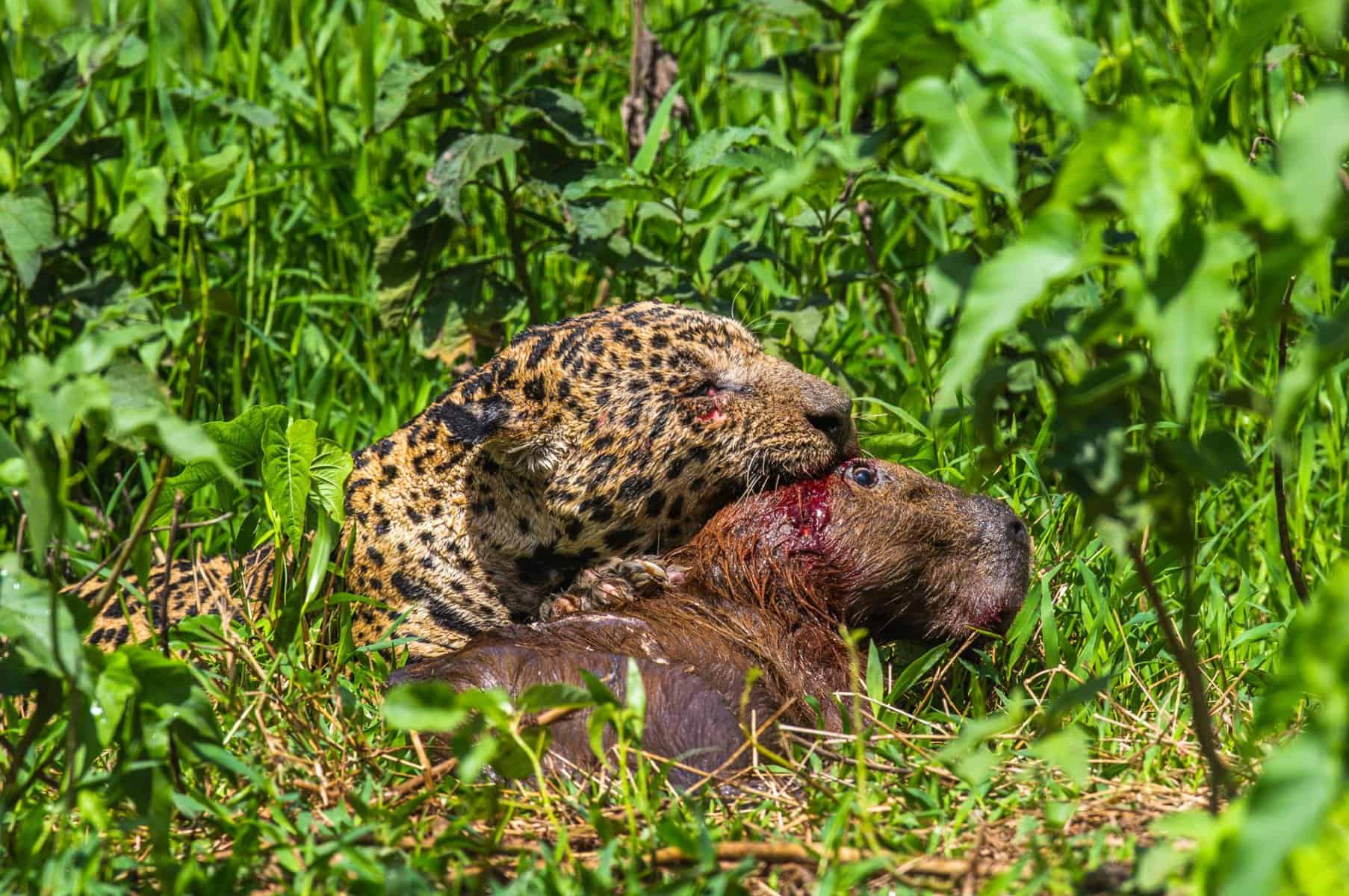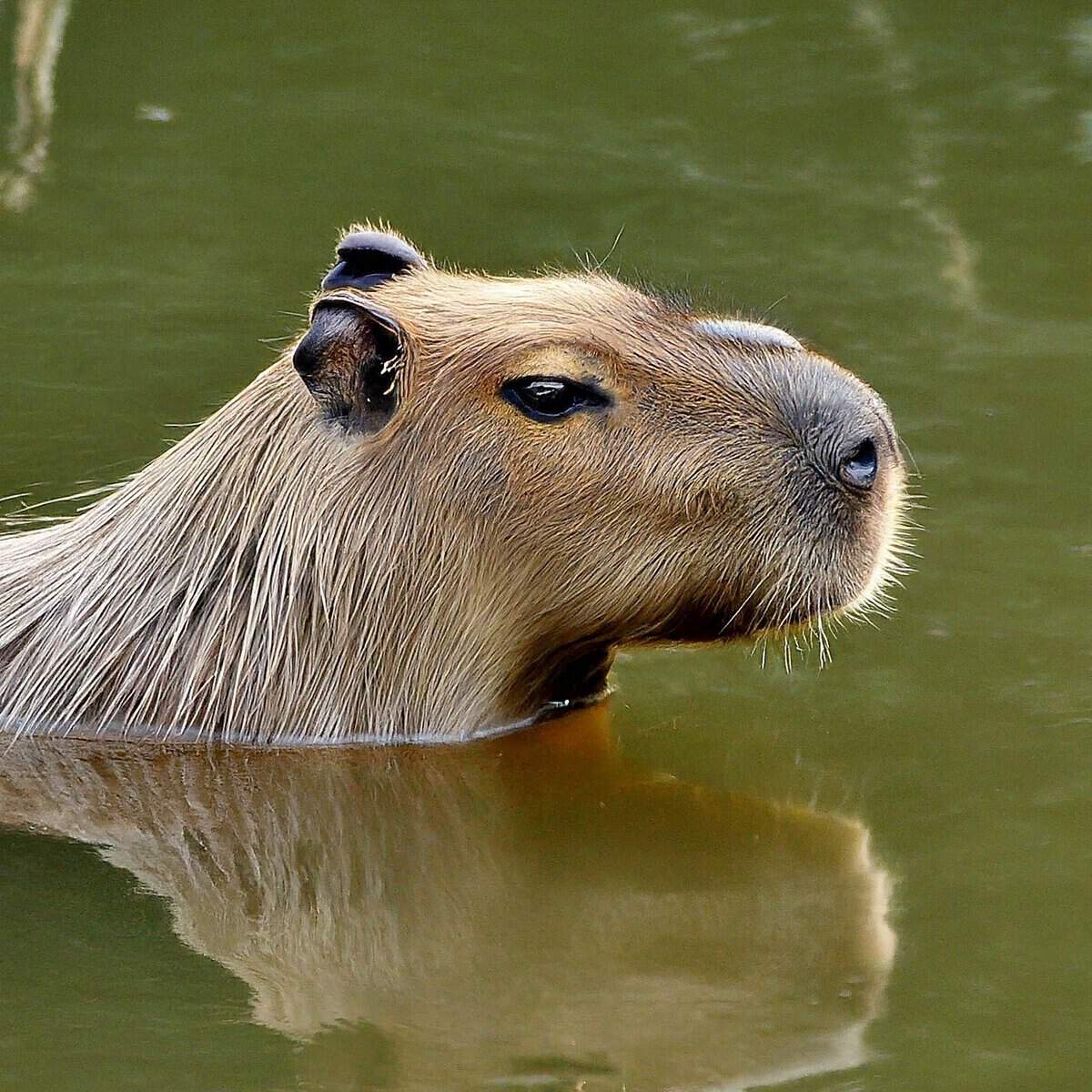Capybaras are the largest rodents in the world, native to South America. They are semi-aquatic mammals that are well adapted to living in a variety of habitats, including rivers, lakes, and marshes.
Capybaras are known for their social behavior and can often be found in groups of 10 to 20 individuals, although larger groups have been observed. They are herbivorous animals, feeding on a diet of grasses and aquatic plants.
Capybaras are also excellent swimmers and can stay submerged for up to five minutes at a time. They are highly valued for their meat and hide, and are often hunted by humans for these purposes.
Natural Habitat and Behavior of Capybaras
Capybaras are found in a variety of habitats throughout South America, including the Amazon Rainforest, the Pantanal wetlands, and the grasslands of Argentina.
They are most commonly found near water sources, as they rely on aquatic plants for their diet and use water as a means of escape from predators. Capybaras are social animals and live in groups, known as herds, which can consist of up to 100 individuals.
They communicate with each other through a series of vocalizations, including barks, whistles, and purrs. Capybaras are also known for their grooming behavior, which helps to strengthen social bonds within the herd. They are primarily active during the early morning and late afternoon, spending the hottest part of the day resting in the shade.
Identification of Capybara Natural Predators
| Predator | Region | Hunting Strategy | Notes |
|---|---|---|---|
| Jaguars | South America | Ambush predator, stalking in forests or water | Major threat in dense forest habitats |
| Anacondas | South America | Constrictor, often attacks in water | Targets young or smaller capybaras |
| Caimans | South America | Ambush in water, sudden strikes | Typically preys on capybaras at water edges |
| Pumas | South America | Stalking and ambushing | Hunts in open or semi-forested regions |
| Ocelots | South America | Silent stalking, often nocturnal hunters | Primarily targets young or smaller capybaras |
| Harpy Eagles | Rainforests | Aerial ambush | Preys on young capybaras in open areas |
| Humans | Global (where present) | Hunting for meat or hide | Often hunted in regions where capybaras are abundant |
Despite their large size and social behavior, capybaras are still vulnerable to predation from a variety of animals. Their main predators include jaguars, pumas, anacondas, and caimans.
Jaguars are particularly skilled hunters and are known to ambush capybaras near water sources. Pumas are also adept at hunting capybaras, using their speed and agility to catch their prey.
Anacondas are large constrictor snakes that can overpower capybaras in the water, while caimans are semi-aquatic reptiles that can catch capybaras as they come to drink or bathe.
Hunting and Feeding Behavior of Capybara Predators
Jaguars are the most significant predators of capybaras and are known for their stealthy hunting behavior. They often stalk their prey near water sources and use their powerful jaws to deliver a fatal bite to the capybara’s neck.
Pumas, on the other hand, rely on their speed and agility to catch capybaras, often chasing them down in open grasslands.
Anacondas hunt capybaras in the water, using their large size and strength to constrict their prey before swallowing it whole. Caimans are ambush predators that lie in wait near the water’s edge, using their powerful jaws to grab capybaras as they come to drink or bathe.
Impact of Predators on Capybara Population
The presence of predators has a significant impact on capybara populations, particularly in areas where hunting pressure is high.
In some regions, jaguars and pumas have been known to reduce capybara numbers to the point where they can no longer sustain healthy populations.
This can have a cascading effect on the ecosystem, as capybaras play a crucial role in maintaining the balance of their habitats through grazing and seed dispersal. In areas where predation is high, capybaras may alter their behavior by avoiding open areas or increasing their vigilance, which can have negative effects on their overall health and reproductive success.
Conservation Efforts to Protect Capybaras from Predators
Conservation efforts to protect capybaras from predators include the establishment of protected areas where hunting is prohibited, as well as initiatives to reduce human-wildlife conflict.
By creating safe havens for capybaras, conservationists hope to provide them with the opportunity to thrive without the constant threat of predation.
Additionally, education and outreach programs aimed at local communities can help to raise awareness about the importance of capybaras and the need to protect them from predators.
By working together with local stakeholders, conservationists can develop strategies to mitigate the impact of predators on capybara populations.
Conclusion and Future Outlook for Capybara Predators
In conclusion, capybaras face a variety of natural predators that pose significant threats to their populations. Jaguars, pumas, anacondas, and caimans all play a role in shaping the behavior and distribution of capybaras throughout South America. Conservation efforts aimed at protecting capybaras from predators are crucial for ensuring their long-term survival.
By addressing the root causes of predation and working with local communities to develop sustainable solutions, we can help to secure a future for these unique and charismatic animals. With continued dedication and collaboration, there is hope that capybaras will continue to thrive in their natural habitats for generations to come.




